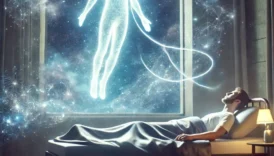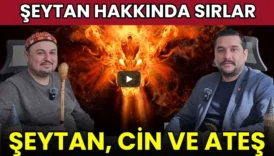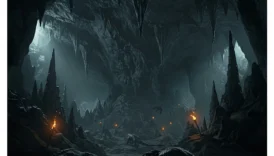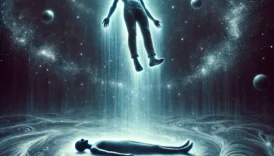Near-Death Experiences and Reincarnation
Near-death experiences (NDEs) and reincarnation are among the most intriguing and mysterious subjects concerning human existence. Throughout history, people from different cultures and belief systems have reported extraordinary encounters at the threshold of death. These experiences, often described by individuals who were clinically dead or near death but subsequently revived, offer compelling insights into the nature of consciousness and the afterlife.
- Near-Death Experiences and Reincarnation
- What Are Near-Death Experiences?
- Common Features of NDEs
- Historical Accounts of Near-Death Experiences
- The Concept of Reincarnation
- Scientific Studies on Reincarnation
- Scientific Perspectives on NDEs and Reincarnation
- Neurological Explanations
- Consciousness and Quantum Theories
- Cultural Interpretations of NDEs and Reincarnation
- Eastern Perspectives
- Western Views
- Modern Western Interest
- Psychological and Spiritual Impact
- References
Reincarnation, the belief that the soul is reborn in a new body after death, has been a fundamental concept in many religious and spiritual traditions. While some consider it a metaphysical phenomenon rooted in karma and spiritual evolution, others remain skeptical, arguing that it lacks empirical evidence.
In this comprehensive exploration, we will examine the historical background, scientific research, cultural perspectives, and psychological implications of near-death experiences and reincarnation. By analyzing firsthand accounts, clinical studies, and philosophical interpretations, we aim to shed light on one of humanity’s greatest mysteries.
What Are Near-Death Experiences?
Near-death experiences refer to extraordinary perceptions and sensations reported by individuals who have come close to death. These experiences are often described during cardiac arrest, traumatic injuries, or extreme medical crises, where the brain’s normal functions are significantly impaired.
Common Features of NDEs
Studies have identified several common elements in near-death experiences:
- Out-of-Body Experience (OBE): Individuals often report a sensation of detaching from their physical body, observing their surroundings from an external perspective.
- Tunnel Phenomenon: Many accounts describe a journey through a dark tunnel toward a bright light.
- Encounter with a Light Being: Some individuals feel the presence of a luminous entity radiating warmth and unconditional love.
- Life Review: A rapid, panoramic replay of significant life events, often accompanied by deep emotional insight.
- Timelessness and Spacelessness: The sensation of transcending time and physical space.
- Profound Emotional and Spiritual Transformation: Many individuals report a lasting shift in their worldview, including increased compassion and a reduced fear of death.
These experiences have sparked intense debates between those who believe they offer glimpses of an afterlife and those who attribute them to neurochemical reactions in the dying brain.
Historical Accounts of Near-Death Experiences
Although modern science has only recently begun to study near-death experiences systematically, such accounts date back to ancient civilizations. The Egyptian Book of the Dead, Tibetan Buddhist texts, and Greek philosophical works contain references to similar phenomena.
One of the earliest documented cases is found in Plato’s Republic, where the story of Er, a soldier who was revived after death, describes an extraordinary journey to the afterlife. Over the centuries, NDE reports have persisted across diverse cultural and religious traditions, reinforcing their significance in human consciousness.
The Concept of Reincarnation
Reincarnation, the belief in the soul’s rebirth into a new body after death, has been central to many spiritual and religious traditions. Rooted in Hinduism, Buddhism, and Jainism, the doctrine suggests that one’s actions in past lives influence future existences through the principle of karma.
While reincarnation is most commonly associated with Eastern religions, variations of the belief can also be found in indigenous traditions, Gnosticism, and certain mystical sects of Christianity and Islam. Even in Western societies, reincarnation has gained attention through spiritual movements and personal testimonies.
Scientific Studies on Reincarnation
Researchers like Dr. Ian Stevenson and Dr. Jim Tucker from the University of Virginia have investigated reincarnation cases, particularly among young children who claim to recall past lives. These studies often involve:
- Children providing specific details about past lives.
- Verified historical accounts aligning with children’s descriptions.
- Birthmarks and physical traits corresponding to past-life injuries.
Although skeptics argue that these cases can be attributed to suggestion, coincidence, or fabricated memories, proponents believe they offer compelling evidence for the continuity of consciousness beyond death.
Scientific Perspectives on NDEs and Reincarnation
Neurological Explanations
Many neuroscientists and psychologists argue that near-death experiences are the result of oxygen deprivation, neurotransmitter activity, and altered brain function during extreme trauma. Studies indicate that:
- The tunnel experience may result from changes in retinal blood flow.
- Out-of-body sensations can be artificially induced through brain stimulation.
- Serotonin and endorphins may produce feelings of euphoria and detachment.
Consciousness and Quantum Theories
Some scientists explore the possibility that consciousness may not be entirely confined to the brain. Quantum physics, particularly theories regarding non-local consciousness, suggests that human awareness may exist independently of the body. Researchers like Dr. Stuart Hameroff and Sir Roger Penrose propose that consciousness may be linked to quantum processes in microtubules, offering a potential explanation for NDEs and reincarnation.
Cultural Interpretations of NDEs and Reincarnation
Eastern Perspectives
In Hindu and Buddhist traditions, near-death experiences and reincarnation are viewed as natural aspects of the soul’s journey. The Tibetan Book of the Dead provides guidance for navigating the afterlife, emphasizing the importance of spiritual preparation for death.
Western Views
In Christianity and Islam, the afterlife is traditionally perceived as a final destination rather than a cycle of rebirth. However, mystics and esoteric traditions within these faiths have explored reincarnation as part of spiritual evolution.
Modern Western Interest
In contemporary Western societies, past-life regression therapy, hypnosis, and spiritual experiences have fueled renewed interest in reincarnation. The increasing number of individuals who claim past-life memories has contributed to ongoing debates between skeptics and believers.
Psychological and Spiritual Impact
Experiencing an NDE or recalling a past life can profoundly transform an individual’s perspective on life and death. Common psychological effects include:
- Reduced Fear of Death: Many individuals report a newfound acceptance of mortality.
- Greater Compassion and Empathy: A heightened sense of connection with others and the universe.
- Spiritual Awakening: Increased interest in metaphysical and existential questions.
- Post-Traumatic Growth: Positive personal development following the experience.
Near-death experiences and reincarnation continue to challenge scientific, philosophical, and spiritual perspectives on consciousness and the afterlife. While skeptics demand empirical proof, many individuals remain convinced that their experiences reveal profound truths about existence.
As research in neuroscience, quantum physics, and consciousness studies advances, new insights may emerge, potentially bridging the gap between materialist and spiritualist worldviews. Whether one believes in NDEs and reincarnation or not, these phenomena invite us to reflect on the nature of life, death, and the unknown dimensions beyond our current understanding.
References
- Moody, R. (1975). Life After Life. Atlanta.
- Stevenson, I. (1966). Twenty Cases Suggestive of Reincarnation. University of Virginia.
- Kübler-Ross, E. (1969). On Death and Dying. Macmillan.
- Van Lommel, P. (2001). “Near-death experience in survivors of cardiac arrest: a prospective study in the Netherlands.” The Lancet.
- Greyson, B. (1983). “The Near-Death Experience Scale: Construction, Reliability, and Validity.” Journal of Nervous and Mental Disease.
- The Tibetan Book of the Dead. Traditional Buddhist Texts.
- Plato. The Republic.
- Carl Gustav Jung. (1933). Modern Man in Search of a Soul.
Views: 0





